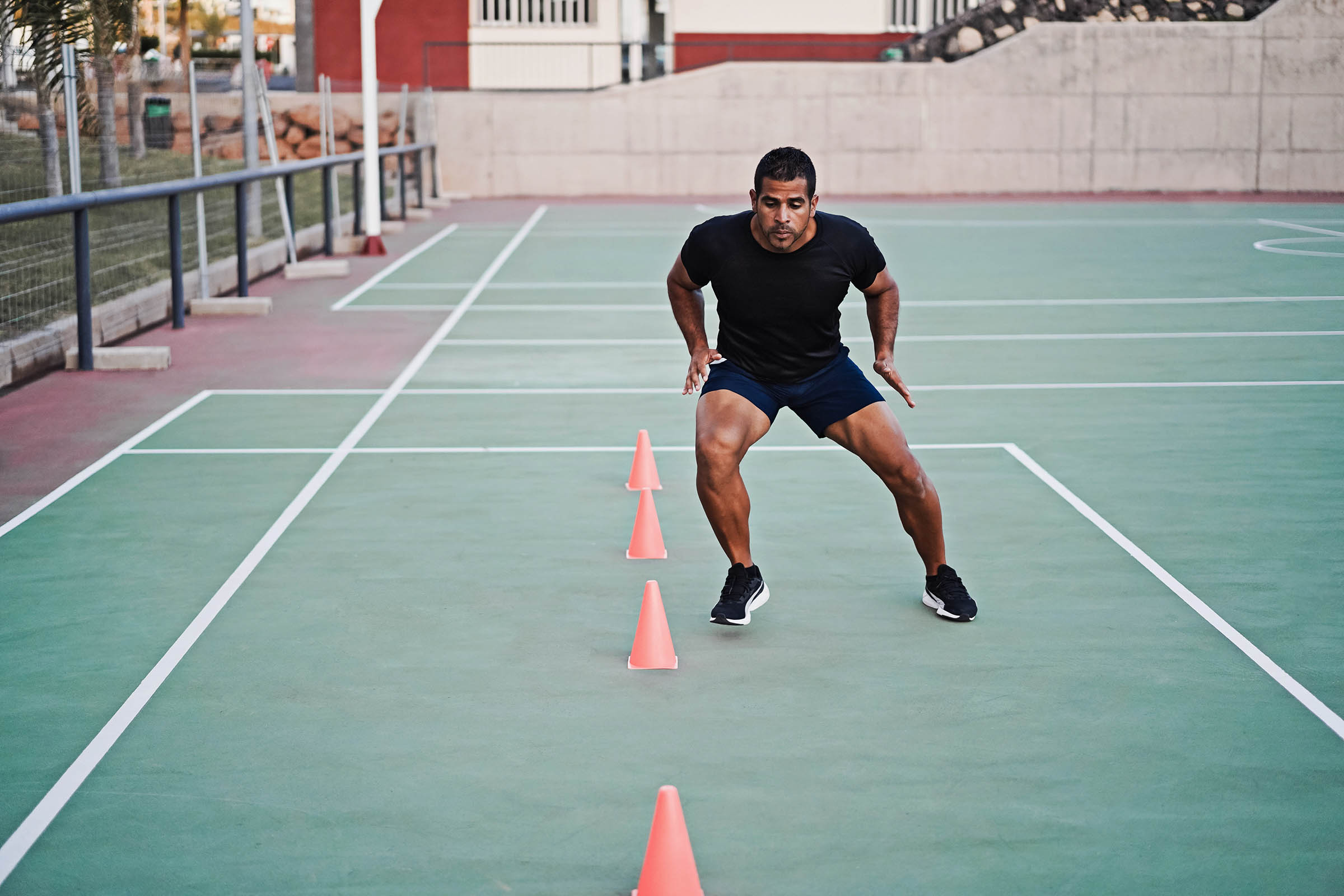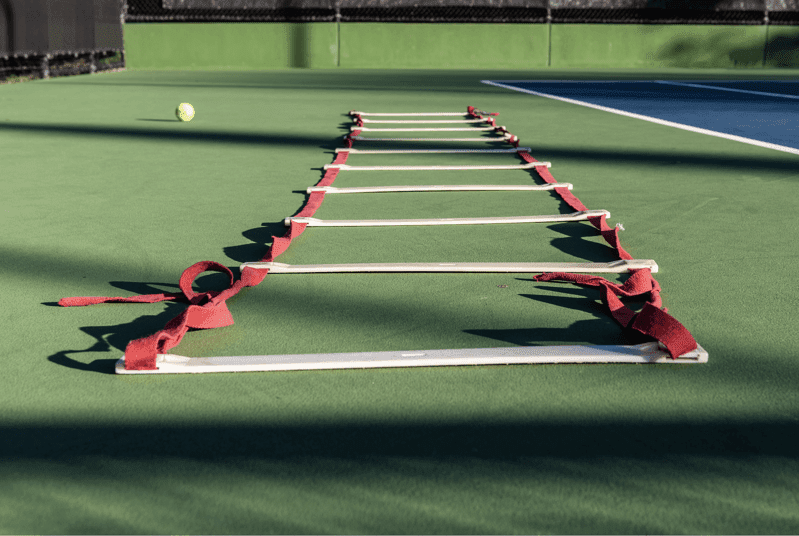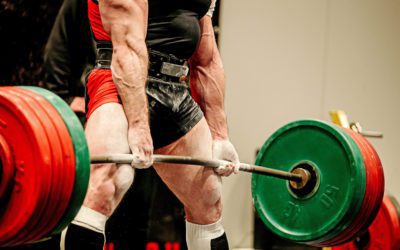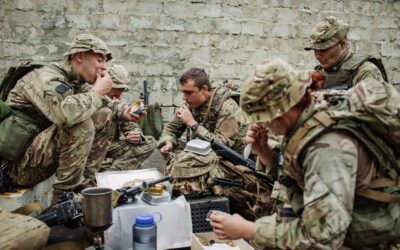The Truth About Speed and Agility Training

Speed is king when it comes to athletic development. Whether you’re a functional fitness warrior or a coach trying to inspire growth in your athletes, most of us can benefit from being faster. What should you be working on in your programming to create better speed and agility?
Ryan is the Director of strength and conditioning at Pro Performance RX In Morgantown, West Virginia. Ryan has been working in the private sector with hundreds of youth athletes for the last 5 years. He is always excited to talk training and dig deep into the Why. Never stop learning, growing and adapting.
Ryan Leibreich


Change the Way You Train
Speed Kills!
It’s time to bring to light what is really behind developing speed, and it doesn’t start with any miracle drill or band attached to you while you run.
I want to educate parents, sports coaches, and the general athlete on developing speed and agility.
What I don’t want is our athletes running around cones when all of our time and effort can be better spent elsewhere.
It pains me to see coaches or organizations who should know better than having their athletes do agility sessions where all they do is run cone drills for an hour. To me, they are simply ignoring the truth and science of how the body and its components work. Do I have athletes use ladders and cones? Absolutely, but it is not the main focus, and it certainly is not what we do for an entire hour.
Here are the short answers to building the fastest, most versatile athletes around.
Simple Truths About Developing Speed & Agility
- Quality is of utmost importance.
- Increasing ability to apply force into the ground and absorb it
- Improving stride length and frequency
- Increasing ability to repeatedly do both of the previous two
Movements That Improve Speed Development
- Sprinting
- Resisted Sprinting
- Plyometric Jumps
- Olympic Weightlifting
- Heavy Squats & Deadlifts
Part 1: 5 Questions I Get Asked And Their Truths
Question #1
If we aren’t doing “speed and agility” drills, how are athletes getting faster? (Typically asked when someone doesn’t see us doing a ton of cone drills and sprinting.)
Answer: We need to redefine what speed and agility are.
Speed /spēd/ noun: the rate at which someone is able to move. “We turned onto the runway and began to gather speed.” Synonyms: rate, pace, tempo. Antonyms: momentum.
Agility /əˈjilədē/ noun: ability to move quickly and easily.
Speed and agility drills are not a lot of hard intense sprinting and running with minimal recovery. These equate to conditioning. What they are: drills that have specific work-to-rest times and maximal effort designed to work on one or two elements at a time. Such as:
- Lateral (side-to-side speed) = shuffling
- Linear (straight ahead) = sprinting
- Change of direction (moving in various planes of motion) = changing levels and angle
- Deceleration/acceleration = starting and stopping
For speed and agility, we need to work plane sessions out and hit all the variables of moving in various planes of motion, direction, and sprinting.
Question #2
What is the best drill/exercise for improving speed?
Answer: The ultimate thing for getting faster is to sprint. Realize that to improve your top-end speed, these sprints cannot be done at anything less than 100%. The next thing is to get stronger, build a bigger engine, and build in better breaks.
Question #3
What if I’m fast, but can’t change direction. What do we need to do?
Answer: If you have ever watched Mighty Ducks, you know there is one hockey player who is super fast but can’t stop. He isn’t effective because he has no control. We have to be able to stop to be an effective player and to reduce injury as well as increase agility.
These type of athletes need to focus on 3 things:
- Coordination of their body – practicing changing hip levels and footwork
- Build in better brakes – continue to get stronger and do movements with eccentrics
- Training in other planes and directions besides straight ahead linear speed
Question #4
Why don’t we just have all athletes run track?
Answer: I think track is a great sport to be involved in. I do believe it can help with speed development. However, it is limited. It covers much of the linear speed development (if they’re running sprints) and some power development if they’re a thrower or jumper. But many sports have multiple other components that need to be addressed to fully develop speed and agility in all aspects.
Question #5
My athlete is fast in drills and practices but not in the game. What’s the deal?
Answer: The truth is that not everything can be solved by practicing drills and getting stronger. You need to practice and study the game, know the game inside and out. If you know where to be and place yourself correctly on the field, you will be faster than anyone else on the field. The better your knowledge of the game, the more things will happen and you will be in the right place at the right time. Your brain can be the best thing to help you improve your speed.

Part 2: Putting Together a Program and Applying It
In order to program speed work and actually apply it in a functional context, we break it down into the following components.
1. FORM WORK / RUNNING MECHANICS
Keep these early in the workout as they are technique intensive.
Warmup basics – A March, A Skip, B march, B Skip, Arm Drill. We do these drills typically as part of our general warm-up to improve coordination and practice for the feel of the correct movement.
*Coaching Techniques: There are small nuances in sprint and change of direction techniques that will help. Certain angles, arm actions, and mechanics do make a difference. Athletes learning how to accelerate, keep dorsiflexion of the toes, keep chin down, etc. matters, but diving into the correct techniques and going in depth on that is for another article.
2. LINEAR SPEED
- Sprints – Typical distances we utilize 10, 20, 40, 60 & 100 yards
- Short – 10s and 20s to work on acceleration
- Medium – 40s and 60s to hit top speed
- Long – 100s to work on maintaining top speed/endurance
Typically 40 to 60 yards is when you hit your fastest speed and then you try to maintain it after that.
3. LATERAL SPEED & CHANGE OF DIRECTION
Shuffling. Various steps – Crossover, open step. Accelerate, deceleration, and changing the level of your hips and direction of running.
Mainly we put lateral speed and change of direction together to provide efficiency and because of how well they complement one another.
4. REACTION
Putting all the other components together, we add another element to it. Reaction is how quickly you process the information and react. We use a lot of tennis ball drops for this and change the start position.
For lateral we do 5/10/5s with various commands – colors, numbers – and we layer the elements. I say right is an odd number and left is even. I then go from 1-10 in numbers. To increase the difficulty, we increase the number from 1-100. 56 is hard because you have to process two numbers with one being odd and the second being even and process that 56 is an even number after that. To continue that, the cones on either side are colored and I could say a color or a number.
Thus we continue to improve how quickly they can react and process information to only be concerned with what information is useful.
Creating power is what creates a better first step. The stronger and more powerful an athlete becomes, the faster and more explosive they will be. Simple. The best way to be effective is consistency and time. Time will build the proper foundation.
What does that look like? There are many ways to apply it and put it together, but here’s one way we like to do it:
| Day 1 Warmup Linear Speed Day Lift Recovery |
Day 2 Warmup Lateral/Change of Direction Lift Recovery |
Day 3 Warmup Reaction Lift Recovery |
How do I build the right strength training plan to complement my speed and agility? Refer back to these two previous articles:
The Key To Better Strength Training Workouts
7 Tips for Writing Better Strength Programs
Some Closing Principles:
- Try to keep it simple.
- Sprint and run in all directions.
- Add volume as conditioning and skill of movements improve.
- Get stronger every day.
- Repeat daily.
Find Your Perfect Training Plan
Sometimes all you need to reach your destination on your fitness journey is an expert guide. We've got you covered. Browse from thousands of programs for any goal and every type of athlete.
Try any programming subscription free for 7 days!
Related articles
32 & Lifting: Reflections on My First Powerlifting Competition
Stepping onto the powerlifting platform at 32, just 13 months post-ACL surgery, Fred Ormerod chronicles his return to competitive sports after a 14-year hiatus. From shedding over 15kg to meet weight class requirements to confronting self-doubt and embracing the...
Active Recovery Strategies for Strength Athletes
Active recovery isn’t just about taking it easy—it’s a smart way to keep your body moving, boost circulation, and enhance performance without adding fatigue. While passive recovery has its place, low-intensity movement between sessions helps reduce stiffness and...
Intermittent Fasting for Shift-Working Athletes
Shift work can make fueling for performance feel like a constant battle. Between erratic schedules, disrupted sleep, and unpredictable training windows, sticking to a nutrition plan can be tough. Intermittent fasting (IF) offers a flexible approach that may already...

Join the community
Sign up for the latest training news and updates from TrainHeroic
Support
Made with love, sweat, protein isolate and hard work in Denver, CO
© 2023 TrainHeroic, Inc. All rights reserved.





